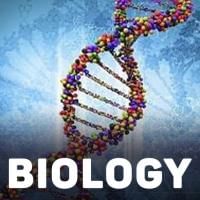NEET Exam > NEET Questions > What is the difference between prosthetic gro...
Start Learning for Free
What is the difference between prosthetic groups and activators? Are they same?
Most Upvoted Answer
What is the difference between prosthetic groups and activators? Are t...
Prosthetic Groups and Activators
Proteins are the most important macromolecules in living organisms. They are involved in various functions such as catalysis, transport, and regulation. Two important concepts in protein function are prosthetic groups and activators. Although they serve different functions, they are often confused with each other.
Prosthetic Groups
A prosthetic group is a non-protein molecule that is tightly bound to a protein and is necessary for the protein's function. Prosthetic groups are covalently attached to the protein and cannot be removed without denaturing the protein. Examples of prosthetic groups include heme in hemoglobin, which binds oxygen, and retinal in rhodopsin, which is involved in vision.
Prosthetic groups can be divided into two categories: cofactors and coenzymes. Cofactors are inorganic molecules or metal ions that are required for the function of certain enzymes. For example, magnesium ions are cofactors for many enzymes involved in ATP hydrolysis. Coenzymes are organic molecules that are required for the function of certain enzymes. Examples of coenzymes include NADH and FADH2, which are involved in cellular respiration.
Activators
Activators are molecules that bind to enzymes and increase their activity. Activators are not covalently bound to the enzyme and can be removed without denaturing the protein. Activators can be divided into two categories: allosteric activators and catalytic activators.
Allosteric activators bind to the enzyme at a site other than the active site and cause a conformational change in the enzyme that increases its activity. An example of an allosteric activator is ATP, which binds to the enzyme phosphofructokinase and increases its activity in glycolysis.
Catalytic activators bind to the enzyme at the active site and increase its activity by stabilizing the transition state of the reaction. An example of a catalytic activator is zinc, which is required for the activity of carbonic anhydrase.
Differences between Prosthetic Groups and Activators
Prosthetic Groups and Activators serve different functions in protein function. The main differences between prosthetic groups and activators are:
1. Prosthetic groups are covalently bound to the protein, while activators are not.
2. Prosthetic groups are required for the function of the protein, while activators increase the activity of the protein.
3. Prosthetic groups cannot be removed without denaturing the protein, while activators can be removed without denaturing the protein.
4. Prosthetic groups can be cofactors or coenzymes, while activators can be allosteric or catalytic.
Proteins are the most important macromolecules in living organisms. They are involved in various functions such as catalysis, transport, and regulation. Two important concepts in protein function are prosthetic groups and activators. Although they serve different functions, they are often confused with each other.
Prosthetic Groups
A prosthetic group is a non-protein molecule that is tightly bound to a protein and is necessary for the protein's function. Prosthetic groups are covalently attached to the protein and cannot be removed without denaturing the protein. Examples of prosthetic groups include heme in hemoglobin, which binds oxygen, and retinal in rhodopsin, which is involved in vision.
Prosthetic groups can be divided into two categories: cofactors and coenzymes. Cofactors are inorganic molecules or metal ions that are required for the function of certain enzymes. For example, magnesium ions are cofactors for many enzymes involved in ATP hydrolysis. Coenzymes are organic molecules that are required for the function of certain enzymes. Examples of coenzymes include NADH and FADH2, which are involved in cellular respiration.
Activators
Activators are molecules that bind to enzymes and increase their activity. Activators are not covalently bound to the enzyme and can be removed without denaturing the protein. Activators can be divided into two categories: allosteric activators and catalytic activators.
Allosteric activators bind to the enzyme at a site other than the active site and cause a conformational change in the enzyme that increases its activity. An example of an allosteric activator is ATP, which binds to the enzyme phosphofructokinase and increases its activity in glycolysis.
Catalytic activators bind to the enzyme at the active site and increase its activity by stabilizing the transition state of the reaction. An example of a catalytic activator is zinc, which is required for the activity of carbonic anhydrase.
Differences between Prosthetic Groups and Activators
Prosthetic Groups and Activators serve different functions in protein function. The main differences between prosthetic groups and activators are:
1. Prosthetic groups are covalently bound to the protein, while activators are not.
2. Prosthetic groups are required for the function of the protein, while activators increase the activity of the protein.
3. Prosthetic groups cannot be removed without denaturing the protein, while activators can be removed without denaturing the protein.
4. Prosthetic groups can be cofactors or coenzymes, while activators can be allosteric or catalytic.

|
Explore Courses for NEET exam
|

|
Similar NEET Doubts
Question Description
What is the difference between prosthetic groups and activators? Are they same? for NEET 2025 is part of NEET preparation. The Question and answers have been prepared according to the NEET exam syllabus. Information about What is the difference between prosthetic groups and activators? Are they same? covers all topics & solutions for NEET 2025 Exam. Find important definitions, questions, meanings, examples, exercises and tests below for What is the difference between prosthetic groups and activators? Are they same?.
What is the difference between prosthetic groups and activators? Are they same? for NEET 2025 is part of NEET preparation. The Question and answers have been prepared according to the NEET exam syllabus. Information about What is the difference between prosthetic groups and activators? Are they same? covers all topics & solutions for NEET 2025 Exam. Find important definitions, questions, meanings, examples, exercises and tests below for What is the difference between prosthetic groups and activators? Are they same?.
Solutions for What is the difference between prosthetic groups and activators? Are they same? in English & in Hindi are available as part of our courses for NEET.
Download more important topics, notes, lectures and mock test series for NEET Exam by signing up for free.
Here you can find the meaning of What is the difference between prosthetic groups and activators? Are they same? defined & explained in the simplest way possible. Besides giving the explanation of
What is the difference between prosthetic groups and activators? Are they same?, a detailed solution for What is the difference between prosthetic groups and activators? Are they same? has been provided alongside types of What is the difference between prosthetic groups and activators? Are they same? theory, EduRev gives you an
ample number of questions to practice What is the difference between prosthetic groups and activators? Are they same? tests, examples and also practice NEET tests.

|
Explore Courses for NEET exam
|

|
Signup to solve all Doubts
Signup to see your scores go up within 7 days! Learn & Practice with 1000+ FREE Notes, Videos & Tests.



























